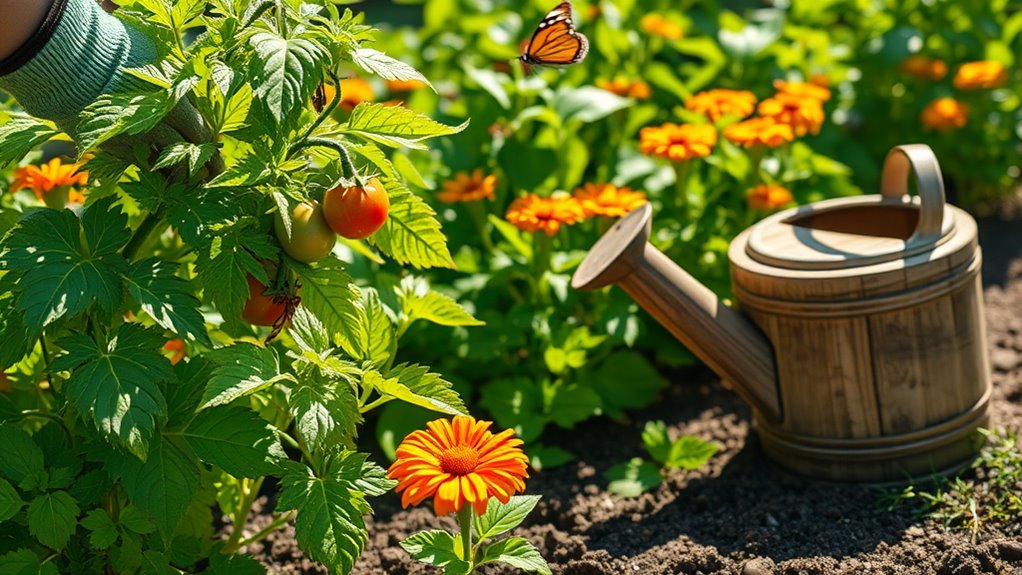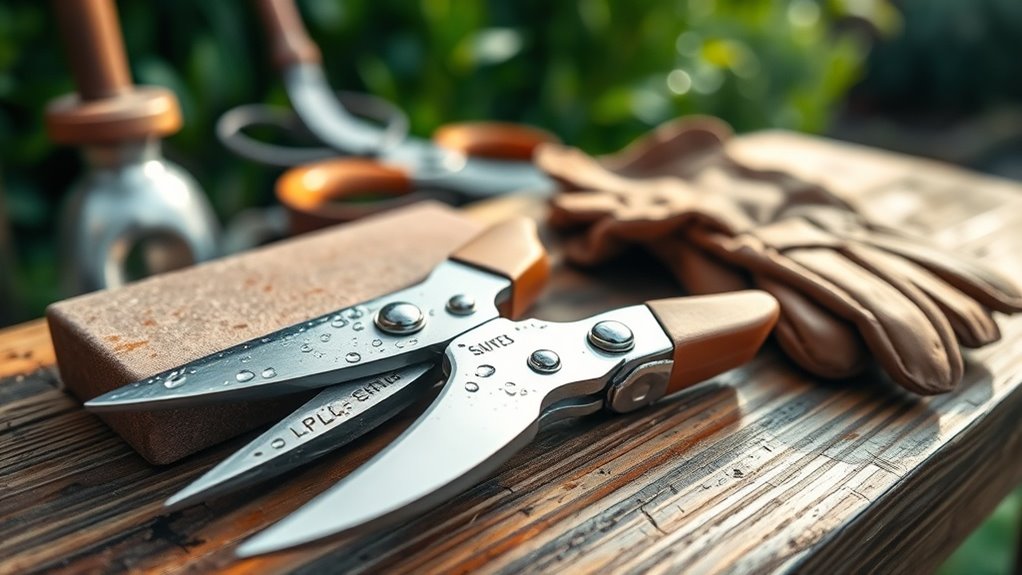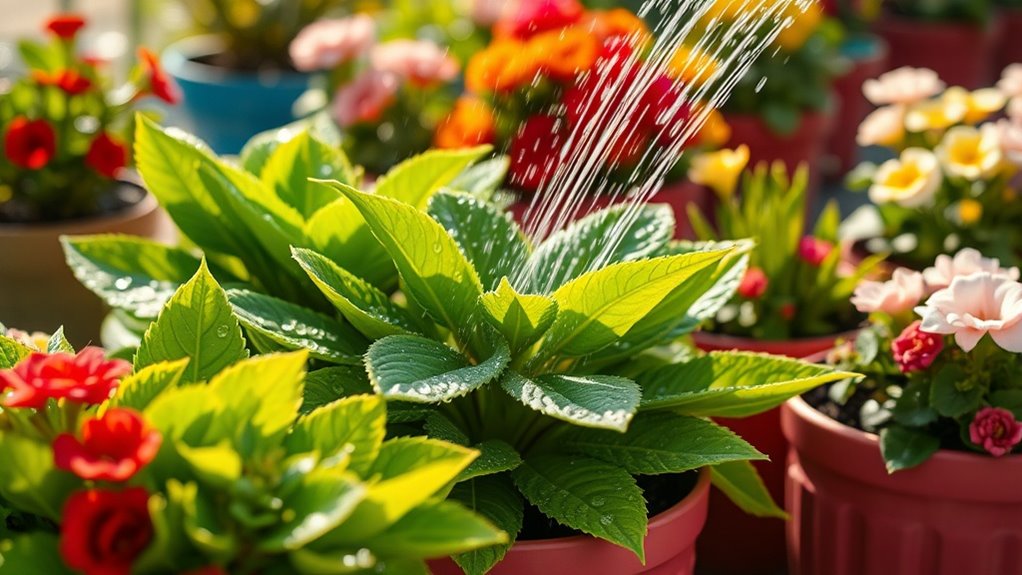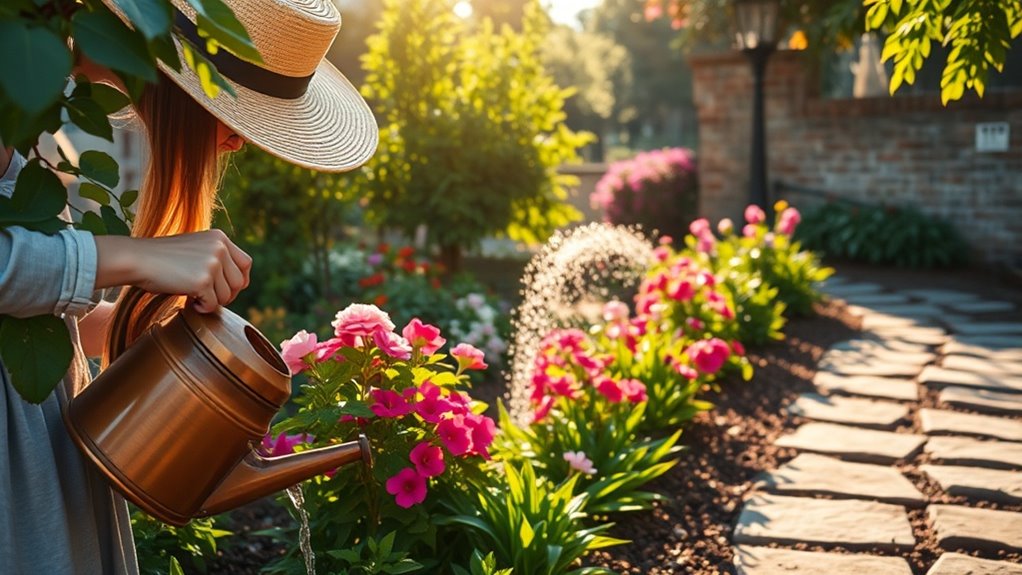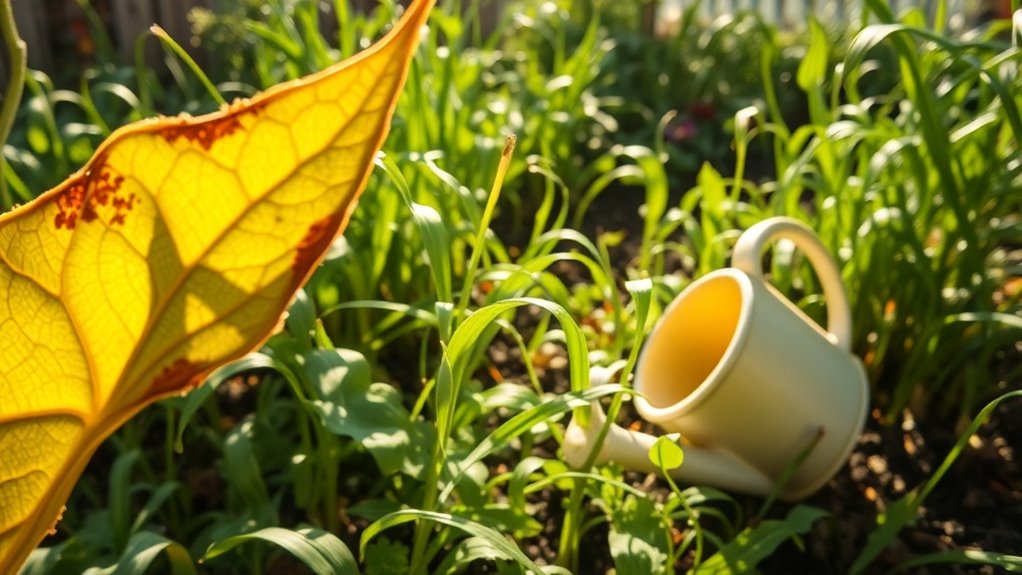How I Keep My Garden Alive With Just 10 Minutes a Day
You can keep your garden thriving with just 10 minutes a day if you focus on smart choices and efficiency. By selecting low-maintenance plants, paying attention to soil health, and employing effective watering techniques, you’ll create a flourishing garden with minimal effort. Plus, quick pest control and simple weeding methods can help you stay on top of any issues. Curious about the best techniques to maximize your time in the garden?
Choosing the Right Plants for Low Maintenance
When you’re looking to create a thriving garden without the hassle, selecting low-maintenance plants is key.
Choose perennials like daylilies or sedums that require minimal care and are resistant to pests.
Incorporate native plants, as they adapt well to your local climate. Additionally, consider integrating easy-to-grow vegetables like lettuce or radishes, which can thrive with little effort and provide a rewarding harvest.
With low maintenance gardening, you’ll spend less time worrying and more time enjoying the beauty of your garden.
The Importance of Soil Health
Selecting low-maintenance plants sets a solid foundation for your garden, but the real secret to thriving greenery lies beneath the surface. Healthy soil means better water retention, nutrient availability, and stronger plant roots. You’ll want to test your soil and amend it with organic matter regularly. Additionally, be mindful of signs of struggling garden soil so you can address any issues promptly.
| Soil Quality | Benefits | Tips |
|---|---|---|
| Nutrient-rich | Promotes healthy growth | Add compost regularly |
| Well-drained | Prevents root rot | Use sand or perlite |
| pH balanced | Enhances nutrient uptake | Test soil pH annually |
Effective Watering Techniques
While thriving plants depend on healthy soil, effective watering techniques are equally crucial for keeping your garden alive.
Water deeply and less frequently to encourage deep root growth. Use a soaker hose or drip irrigation to minimize evaporation and deliver moisture directly to the roots.
Early morning is the best time to water, reducing disease risk while maximizing plant hydration. Additionally, watering during the best times of day helps ensure that your plants receive the maximum amount of moisture without the risk of evaporation losses.
Quick Pest Control Strategies
As soon as you notice pests invading your garden, taking swift action can save your plants from serious damage.
Use natural remedies like neem oil or soapy water to deter unwanted critters. Sticky traps can catch flying insects, while introducing beneficial insects like ladybugs can keep harmful ones in check. You can also create a DIY bug spray using three natural ingredients that is safe and effective for pest control. Regularly inspect your plants, and don’t wait—act fast to protect your garden!
Simple Weeding Methods
After managing pests, it’s time to tackle one of the most common challenges in gardening: weeds.
Start by pulling them out by hand, ensuring you remove the entire root. You can also use a hoe for larger areas, cutting weeds just below the soil line.
Regularly checking your garden for new growth will keep these invaders from taking over. Additionally, incorporating natural methods such as mulching can help suppress weed growth and improve soil health.
Happy weeding!
Using Mulch to Save Time and Effort
Adding a layer of mulch to your garden can make a world of difference—it’s one of the easiest ways to save time and effort while keeping your plants healthy. Mulch reduces the need for frequent watering, prevents weeds, and helps maintain soil temperature. Plus, it gives your garden a polished look. Additionally, incorporating banana peels into your mulch can enrich the soil with essential nutrients, enhancing your garden’s growth potential.

